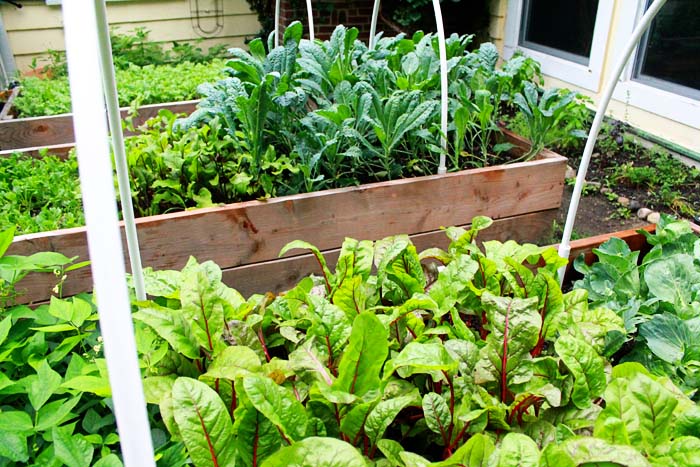Have you ever thought of being a farmer? How about a suburban farmer?
At End of Three Fitness we are all about doing things differently. We will build our equipment if we have to, we train to become harder to kill, we find simple(ish) ways to build mental toughness, and we’ll find new and creative ways to use note taking software.
How about finding ways to grow our own healthy produce? A bit revolutionary, if you ask me.
So, really, have you ever thought of being your own farmer??
You know; milk your own cows, get farm fresh eggs from your chickens, plant your own crops…sounds pretty cool, right?
Then…you realize that being a farmer today requires knowledge of advanced technology, educational preparation and business skills. Not to mention the occasional 12+ hour day of back-breaking work.
Ok, ok how about suburban farming with very little time involved and great rewards? Pretty cool, right? Well, I am not the one doing it, but I got to witness it this past week.
I just spent the last couple days in New York with my family; my mother-in-law, father-in-law and sister-in-law, and got to witness a pretty cool thing they were doing. Basically, they started a mini-farm right next to their house. They were growing all sorts of things and I even got to partake in some of of the greenery during dinners and lunches – it was delicious.
I thought what they were doing was pretty awesome – suburban farming. I can definitely relate to the mentality. Why pay for a gym when you could build your own? Well, why pay for vegetables when your could grown your own?
How to be a Suburban Farmer – An Interview
Let’s get the Suburban Farming ‘what’ (what are you growing, what is your setup, what did you use to plant)?
We made double raised beds with Douglas Fir wood from home Depot. 5 beds cost about $300. Our beds are 8′ x 3′ and 20″ tall. All we needed to put them together was a drill and some deck screws. We had Home Depot cut the wood. I also installed some PVC hoops so that we could cover the beds in case of frost. We have sprinklers on a timer but a drip tape would be better. We’re growing cabbage, Swiss chard, two types of string beans, beets, toscano kale, arugula, tomatoes: Sungold, Striped German, and Indigo Rose, cucumbers, basil, thyme, rosemary, Italian parsley, oregano, mint. We buy our seeds on johnnyseeds.com. If we wanted to sustain our family of 4, we would need a garden about 4 times the size of ours. A great planning website is smartgardener.com!! For success, chose veggies that thrive in your climate zone. We try to grow what Stone Barns, a local farm near us, is growing.
When did you decided to farm at home and how long have you been at it?
Spring 2013. First-timers! Although we did have help from an experienced backyard farmer.
Why Suburban Farming? What made you want to start farming on your own?
Fresh, organic and low cost once we paid for the beds + dirt. We also wanted to grow heirloom varieties and stay far away from MONSANTO!!
What is the biggest challenge/greatest reward involved with Suburban Farming?
Challenges are always bugs and weather. We had a shady, wet spring and so things had a hard time getting started. Then, the caterpillars came. We picked them off two or three times a day…we won in the end though! Greatest rewards: crispy, sweet cucumbers, a fresh supply of kale for smoothies, awesome Swiss chard, and can’t wait for the tomatoes. We are growing only heirloom seeds…so variety is also a big reward. These are not your typical grocery store varieties. Also, cost!! A bag of seeds that cost $3 might yield 300 plants! That’s a lot of food!!
Recommendations for those wanting to get involved in suburban farming?
Ask an experienced gardener for help. Read gardening blogs; find out what grows well in your area. Plan ahead! We were germinating seeds in the basement in December!
How much does suburban farming cost?
We spent about $300 at Home Depot on wood and screws and about $150 on dirt and compost. We’ve since made our own compost pile and shouldn’t have to buy anything next year!
How much time does suburban farming consume weekly?
We hardly spend any time at all. Occasionally, we weed and pick off caterpillars. Maybe an hour a week? Harvesting doesn’t take much time because I’m out there daily picking what we want to eat. Most of the time is spent gazing at our gorgeous plants!!
Anything else Eo3 readers should know, or anything you would like to add?
The first year is always an experiment. Don’t get discouraged if you don’t yield much. We have actually had a great first year! Remember to plant extra for the plants you will lose to pests, mother nature. Buy good dirt and compost. Get your kids involved in picking seeds, germinating, planting and harvesting!
###
I’d like to thank Jonna and Laura for helping out with this post – truly a cool suburban farm.
So that’s suburban farming. If you have any questions or want more info just add it to the comments and I will be sure to get you the answers.
To being revolutionary!
-Jerred









